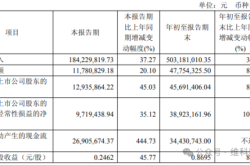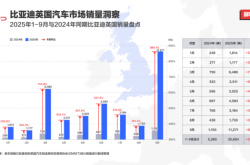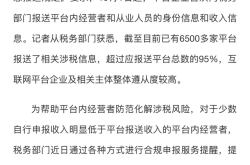Technology Guarding the Dining Table: AI's Role in Revolutionizing the Food and Beverage Industry
![]() 03/19 2025
03/19 2025
![]() 582
582
Traditionally, the culinary world has been a domain of artistry and human skill. However, with the increasing influence of artificial intelligence (AI) on restaurant operations and dining experiences, the culinary landscape is undergoing significant transformations.
A report by the National Restaurant Association in the United States reveals that 40% of restaurant operators plan to increase investment in technology over the next two years, signaling a shift towards AI-driven technological solutions in the industry.
Faced with evolving customer expectations and the need for operational efficiency, innovative chefs and restaurant owners are embracing AI technology. AI not only fosters creativity and streamlines processes but also delivers exceptional service in a highly competitive market.
AI is transitioning from a futuristic concept to a practical tool, revolutionizing the operations of the food and beverage industry, from customizing menus to automating complex kitchen tasks.
01. AI Menus: Personalization and Taste Prediction
One of the most compelling applications of AI in the culinary field is in menu design.
Traditional fixed menus are being replaced by AI algorithms that analyze vast amounts of data on customer preferences, food trends, seasonal ingredient availability, and even local tastes, creating a flexible and personalized dining experience.
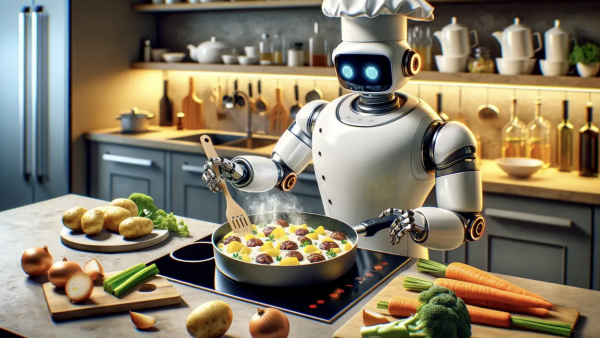
These intelligent systems can predict popular dishes, suggest new flavor combinations, and swiftly adjust menus based on customer feedback and inventory levels.
A McKinsey study found that enterprises adopting data-driven personalization experienced a 10% to 15% increase in sales, demonstrating the potential financial benefits of AI-optimized menus in the food and beverage industry.
Imagine a menu that dynamically adjusts based on your dietary needs and previous orders, recommending dishes you might enjoy. AI is making this vision a reality. By learning from customer interactions and order history, AI can suggest dishes tailored to individual tastes, achieving mass customization of the dining experience.
Furthermore, AI analyzes social media trends and online reviews to uncover new dietary preferences, helping chefs stay current and create dishes that cater to contemporary tastes.
This AI-based innovative menu design enables restaurants to better respond to market changes and continuously improve dishes to meet or exceed customer expectations. This ability to anticipate customer needs is becoming a crucial advantage in the rapidly evolving food and beverage industry, enabling restaurants to consistently satisfy and impress customers.
02. Automated Kitchen Operations: Efficiency and Cooking Precision
Beyond menu design, AI has also made significant strides in kitchen operations. AI-driven automated kitchen systems are transforming food preparation, cooking, and inventory management, enhancing efficiency and cooking precision.
Robotic arms and AI-powered cooking equipment handle daily tasks such as chopping vegetables, grilling burgers, and even preparing complex dishes. This allows chefs to focus on creative menu development and quality control.

A report by the IMARC Group estimates that the food robotics market reached $2.71 billion in 2024 and is projected to grow to $6.29 billion by 2033, with a compound annual growth rate of 9.32% from 2025 to 2033.
This automation technology addresses the widespread labor shortage in the food and beverage industry while ensuring consistency and speed in food preparation, crucial for maintaining customer satisfaction and business profitability.
AI systems also play a pivotal role in optimizing inventory management. They predict the ingredients needed based on historical sales data and reservations, reducing food waste and ensuring restaurants always have the necessary ingredients to meet demand.
Smart ovens and cooking equipment equipped with AI sensors precisely control cooking temperatures and times, ensuring consistent dish quality and minimizing cooking errors.
This technology is also applied to dishwashing and cleaning robots, further automating kitchen tasks and allowing employees to focus on tasks requiring human skills, such as plating, decoration, and direct customer interaction. These AI tools are a significant step towards enhancing kitchen operation efficiency and overall performance.
03. Robot Servers and Personalized Service
The application of AI extends to front-of-house operations, particularly with the introduction of robot servers.
While robots have not fully replaced staff, they assist with tasks such as delivering food, taking orders, and processing payments, especially in fast-food and casual dining restaurants. These robots enhance efficiency during peak hours, reduce wait times, and provide a novel and enjoyable dining experience for customers.
Research shows that 76.6% of people are more willing to accept robot servers if they find them easy to use. Additionally, 75.6% of consumers who find these robots helpful indicate that they are easy to interact with, demonstrating clear benefits that make them more popular.
Meanwhile, AI enables personalized service through data analysis, allowing restaurants to predict customer needs and preferences, provide customized recommendations, and create a more attentive and personalized dining atmosphere. AI-driven chatbots and virtual assistants also improve customer interaction through online platforms and mobile apps, handling reservations, answering questions, and providing instant support.
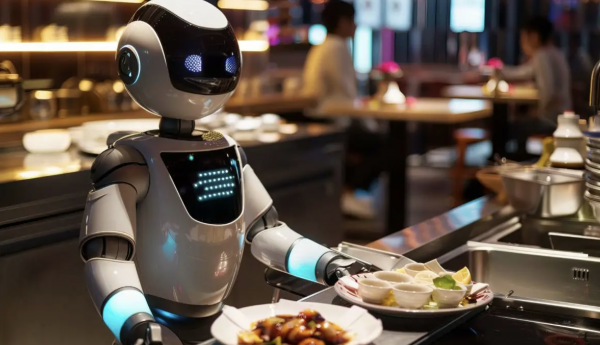
These digital tools are not only convenient and user-friendly but also allow customers to contact restaurants at any time and quickly receive responses. Data collected from these interactions provides valuable insights into customer preferences and behaviors, further refining personalized service strategies.
While interpersonal interaction remains vital in food service, AI is enhancing the dining experience by providing efficient, personalized, and seamless service, catering to modern customers' demands for speed and convenience. The synergy of humans and AI is shaping the future of customer service in the food and beverage industry, creating a more responsive and satisfying dining environment for customers.
04. The Importance of Business Skills
With the widespread adoption of AI in the food and beverage sector, the future industry will become more efficient, personalized, and innovative. Restaurants that strategically integrate AI technology are likely to gain a competitive edge, improving operational efficiency, customer experience, and profitability.
However, navigating this technological shift requires deep culinary knowledge and business management skills. This is why an MBA in Finance is essential for chefs and restaurant owners aiming to excel in the industry.
MBA programs offer valuable resources for restaurant owners, encompassing expertise in financial management, marketing, leadership, and business growth, while providing a robust professional network. They also equip culinary professionals with the necessary insights to wisely apply AI technology in their businesses.
Despite the high costs and time commitment of an MBA, its long-term benefits can far outweigh these challenges, particularly for those aiming to expand their business, open chains, or secure investor funding.
05. The Future of the Food and Beverage Industry
As AI transforms the food and beverage industry, the key to success lies in balancing innovation with humanized service. While technology enhances efficiency and personalization, understanding its financial impact, from initial costs to long-term returns, is crucial for sustainable growth.
By combining a passion for cooking with solid business knowledge, industry leaders can ensure that AI-driven technological advancements not only deliver tangible business benefits but also enhance the dining experience.
Original source:
The Chinese content is compiled by the MetaverseHub team. Please contact us for reprinting.

